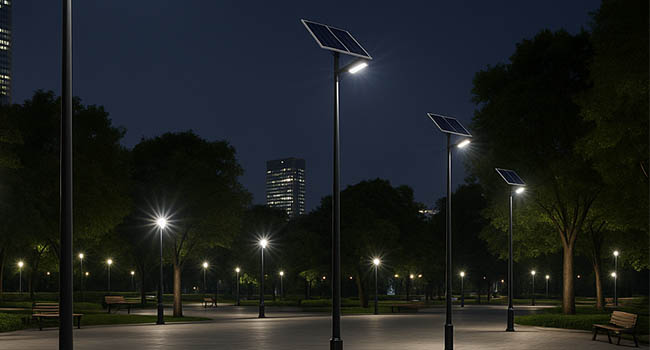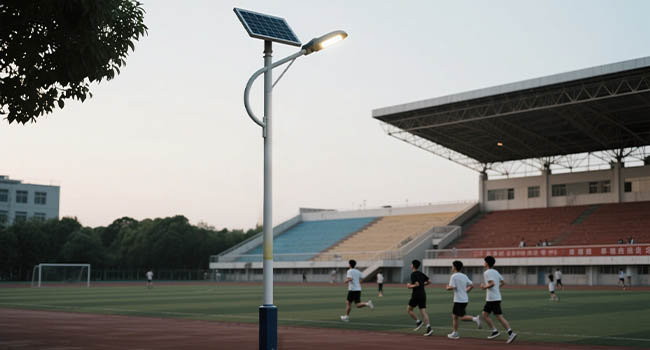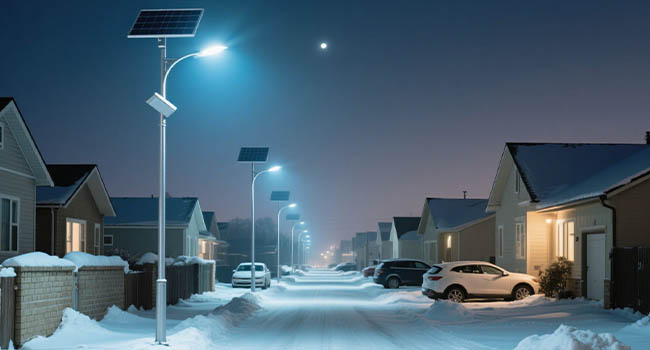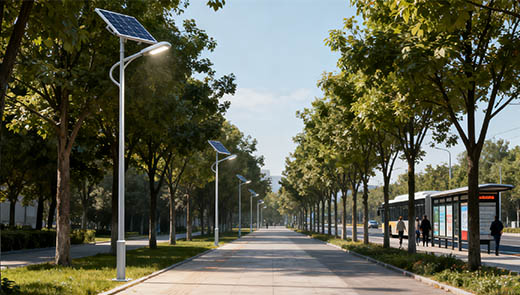How to Test the Quality of LED Street Lights?
LED street lights are a key facility for ensuring road safety at night. Their quality not only directly affects the safety of pedestrians and drivers but is also closely related to public spending in cities. However, some unscrupulous manufacturers use counterfeit chips, substitute gold wires, and unreasonable light distribution to produce substandard products, posing a threat to the market. Therefore, mastering scientific quality testing methods, particularly focusing on key indicators such as average illuminance, uniformity, and operational duration during cloudy or rainy weather for solar-powered street lights, is crucial for selecting qualified products.

Importance of street light quality
In modern urban development, road construction plays a pivotal role, and LED street lights, as critical equipment in road construction, cannot be underestimated. They illuminate roads at night, creating a safe environment for pedestrians and drivers. Therefore, quality must be prioritized when purchasing LED street lights. Substandard street lights have extremely unstable lighting performance, which can lead to a series of maintenance and replacement issues. This not only directly affects the safety of pedestrians and drivers but also increases the public expenditure burden on urban construction.
Common tricks of unscrupulous LED street light manufacturers
Using counterfeit chips
Chips are the core components of LED lighting fixtures and directly determine their performance. However, some dishonest manufacturers, driven by profit motives, exploit consumers' lack of technical expertise by using cheap counterfeit chips. This not only significantly reduces the quality of LED street lights but also causes consumers to pay high prices for substandard products, thereby infringing upon their rights.
Using copper wires instead of gold wires
Some LED manufacturers reduce costs by substituting copper alloys, silver alloys, or gold-plated silver alloys for expensive gold wires. While these alternatives have certain advantages in some aspects, their chemical stability is far inferior to that of gold wires. Specifically, silver wires and gold-plated silver alloy wires are susceptible to corrosion by sulfur, chlorine, and bromine, thereby reducing the reliability of the light source.
Copper wires, on the other hand, are prone to oxidation and sulfidation, increasing the likelihood of LED lamp failures. These alternatives, due to their susceptibility to chemical corrosion, reduce the reliability of the light source, significantly increasing the likelihood of LED lamp failures after prolonged use.
Unreasonable design of the light distribution
The rationality of the light distribution design directly affects the lighting effect. If the light distribution design is unreasonable, various issues may arise during testing, such as only illuminating nearby areas, excessive darkness under the lamp, uneven light distribution, or zebra-striped light patterns. Such lighting effects fail to meet the actual requirements of road lighting and pose safety hazards for nighttime travel.
Poor heat dissipation design
The lifespan of LED chips is closely related to temperature; as temperature increases, their lifespan decreases exponentially. Since LED street lights have high brightness requirements and often operate in harsh outdoor environments, high temperatures and dust can exacerbate heat dissipation challenges. If heat dissipation design is inadequate—for example, insufficient heat sink fin area or poor thermal conductivity of materials—heat cannot be dissipated promptly. This accelerates LED chip lumen depreciation and may cause color temperature shifts, leading to rapid aging of the street light and significantly shortening its service life.
Power supply failure
The quality of the power supply directly affects the normal operation of street lights. If the power supply is of poor quality, during testing, the street lights may experience sudden shutdowns, damage to components, multiple LED chip failures, or issues such as dim lighting and flickering. These problems can prevent the street lights from functioning properly, thereby compromising road safety.

Safety is not guaranteed
Some manufacturers often overlook safety issues related to street lights, which are mainly reflected in the following aspects: street light power supplies lack leakage protection, posing a risk of electric shock. street light ballasts are of poor quality and prone to failure. Circuit breakers have excessively high rated trip currents and have not been tested for sensitivity, making them unable to trip and provide protection in a timely manner when circuit problems occur. Using the metal sheath of the cable as the PE main line is not only complex but also unreliable.
Insufficient waterproofing and dust proofing ratings can lead to water ingress or dust accumulation, affecting the performance and lifespan of the street lights. The materials used contain substances harmful to the light source, causing the LED light source to darken and shortening its lifespan.
How to evaluate solar street lighting?
Average illumination
When determining whether a solar street light is sufficiently bright, one should not solely rely on the brightness under the light. Some manufacturers, in an effort to make the street light appear brighter, omit the use of optical lenses, concentrating the light in a small area directly under the light. As a result, the area directly under the light becomes extremely bright, while other areas remain relatively dim.
This alternating bright and dark pattern increases driving risks, as the human eye experiences temporary visual blind spots when suddenly shifting from bright to dark areas, making it difficult for drivers to see clearly in darker areas and increasing the likelihood of accidents. Additionally, prolonged exposure to such lighting conditions on roads may cause drowsiness. Therefore, the reference value for road brightness should be average illuminance.
Uniformity
High-quality solar street lights can uniformly illuminate the entire road, avoiding situations where some sections are overly bright while others are too dark. The formula for calculating uniformity is: Uniformity = Minimum Illuminance / Average Illuminance. Average illuminance and uniformity are also key indicators in international lighting standards and serve as important criteria for evaluating the quality of street light illumination.

Operating hours on rainy days
Many regions around the world experience prolonged periods of cloudy and rainy weather during the autumn and winter seasons. Therefore, the operating hours of solar street lights during rainy weather are an important evaluation criterion. If solar lights can only illuminate for a few days during the autumn and winter seasons, the primary reason is that their configuration is insufficiently robust, and the system design did not adequately account for rainy weather conditions. To test the performance of solar street lights on rainy days, place the solar street light or solar panels in a shaded area with diffused sunlight to simulate rainy weather conditions. Then, count the number of days the street light can operate normally to assess its performance on rainy days.
Assessing the quality of LED street lights requires a multi-faceted approach, including vigilance against common tactics employed by unscrupulous manufacturers, as well as evaluating metrics such as average illuminance, uniformity, and operating duration during rainy weather to determine the quality of solar street lights. Prioritizing the quality of LED street lights not only ensures nighttime travel safety but also reduces long-term maintenance costs. It is hoped that the above information will assist readers in making informed decisions when purchasing LED street lights.




